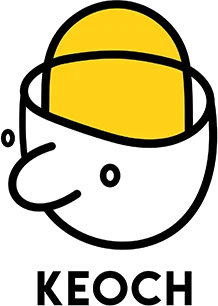AI is changing how people find information. Search engines no longer just list websites — they now generate answers on the spot.
You’ve likely seen it yourself. AI-powered tools and Google’s new AI Overview provide direct, conversational responses that appear above the usual search results.
For businesses, this is a big shift. Ranking high on Google alone isn’t enough anymore. To stay visible, you need to think beyond SEO and also consider how to appear in those AI-generated answers.
That’s where Generative Engine Optimization (GEO) comes in. In this blog, we’ll look at how search has evolved, what makes GEO different from SEO, and how to adapt your content so your brand stays in front of customers, no matter how they search.
How Have Search Results Changed with AI?
AI-powered search now answers search queries directly with a conversational response, pulling information from multiple sources and presenting it at the top of the page. This is different from traditional search, which primarily recommended websites for users to click through.
For years, search engines worked in a predictable way. They scanned the web, found pages most relevant to a user’s query, and generated a list of recommended websites, each with a short description. Users would scroll through those snippets, choose a site, and SEO determined which pages appeared at the top. Ranking high meant visibility, traffic, and leads.
That experience is still there, but it’s no longer what users see first. AI-powered features, like Google’s AI Overview and Bing’s AI results, sit above the traditional listings. Instead of just pointing to sources, they synthesize information into a single, conversational answer. Users get what they need immediately, often without ever visiting a site.
- Nearly sixty percent of Google searches now end without a click, meaning users get what they need on the SERP itself.
Let’s take a look at an example, using the search query “What’s the best way to treat back pain?” and searching it on Google.

The AI doesn’t just list sites. It restructures the information into a layered response: a concise summary at the top, followed by organized sections like Home Remedies, Professional Treatments, and Prevention. To the right, it cites sources — WebMD, Johns Hopkins Medicine, Harvard Health, and Medical News Today — giving them visibility while pushing every other result farther down the page.
This example shows how AI search reshapes visibility. The AI decides what information to feature and which sources to credit. If your content isn’t chosen, users may never encounter it.
This is why businesses need to think beyond SEO and start optimizing for Generative Engine Optimization (GEO).
SEO vs. GEO: What’s the Difference?
SEO and GEO are both about getting your content surfaced, but they target different parts of the search experience.
With Search Engine Optimization (SEO), the goal is to help your website appear in Google’s list of recommended pages, whether that’s a regular blue link, a featured snippet, or a “People Also Ask” answer. These spots drive users to click through to your site to learn more.
Generative Engine Optimization (GEO) focuses on a newer challenge: getting your content selected and cited inside AI-powered search responses, like Google’s AI Overview. Here, the AI generates its own conversational answer and chooses which sources to reference. GEO makes sure your content is clear, structured, and credible, so it’s one of the sources the AI uses to build its response.
- Over 54.6% of Google searches by volume now trigger an AI Overview.
Here’s how they compare:
| Feature | SEO (Search Engine Optimization) | GEO (Generative Engine Optimization) |
|---|---|---|
| Target Platform | Traditional search engines (Google, Bing) | AI-driven search features (Google AI Overview, Bing AI) |
| Goal | Rank high to earn clicks and traffic | Be cited or referenced in AI-generated answers |
| Result Format | List of website links, featured snippets, PAA | Single conversational answer with embedded sources |
| Optimization Focus | Keywords, backlinks, technical site factors | Content structure, authority, clarity, and trust |
| Success Metrics | Rankings, CTR, organic traffic | Citations, mentions, brand visibility within answers |
Both strategies matter, but while SEO gets your site into search results, GEO works to get your information to appear inside the AI-generated answers users read first.
How To Optimize for AI-Generated Search Results
To appear in AI-generated search answers, your content needs to be clear, credible, and easy for AI to understand and utilize. Generative engines still reward the same fundamentals: high-quality, research-backed information that’s well-structured with headings and enriched with details. But they also prioritize content they can quickly parse, trust, and integrate into their responses.
Here’s how to start optimizing for AI search:
- Provide authoritative, well-cited information. Use data, statistics, and expert quotes, and link to sources with proven authority (you can check domain authority with tools like Ahrefs or Moz). AI favors content backed by reputable, high-authority references.
- Answer questions directly. Write content that addresses user queries head-on. Including FAQs or structuring sections so each one answers a specific question makes it easier for AI to extract and use your information.
- Answer conversational, long-form queries. Users now search like they’re chatting, asking full questions such as “What’s the best way to treat back pain at home?” instead of just typing keywords. Use natural, question-based phrasing in your content so AI recognizes it as a relevant answer.
- Keep your writing clear and organized. Use descriptive headings, short paragraphs, and lists where they make sense. AI performs better when it can quickly identify and extract the key information.
- Use structured data and schema. Mark up FAQs, how-tos, and other content types so search engines and AI can easily interpret the purpose and relationships within your content.
- Maintain strong technical optimization. Ensure your site loads quickly, works well on mobile, and is easily crawlable. Search engines and AI models rely on well-indexed, accessible pages when selecting sources.
- Build brand authority. The more your brand is mentioned or linked by credible sites, the stronger the signals AI receives that your content is trustworthy. PR, guest articles, and thought leadership can all boost these authority signals.
- Publish unique and fresh insights. AI models are trained on massive datasets, but many now integrate real-time search. Fresh, original content, especially proprietary data, case studies, or new analysis, is more likely to be discovered and cited.
- Use a conversational tone. AI-generated answers are often conversational. Writing in a clear, approachable voice aligns with how AI prefers to present information.
- Monitor what AI says. Test queries related to your business and see which sources it cites. If competitors are appearing or there are gaps in the answers, create stronger, better-structured content to fill those needs.
These tactics build on traditional SEO while adapting your content for how AI searches, evaluates, and delivers answers, helping your business stay visible in this new search landscape.
Why SEO Isn’t Dead and How GEO Fits In
The rise of AI-powered search doesn’t make SEO irrelevant; it makes it more important. Traditional SEO still drives traffic from the links below the AI box, and the same practices that help you rank in organic search results also strengthen your chances of being referenced by AI.
Where SEO focuses on getting users to click through to your site, GEO focuses on getting your content included in the AI-generated answers users see first. They work together: high-quality, authoritative content optimized for user intent can perform well in both environments.
Think of GEO as an extension of SEO rather than a replacement. When you create content that answers questions directly, uses structured data, and builds authority, you’re improving search rankings and you’re giving AI what it needs to trust and feature your information.
Want to make sure your business shows up in AI search?
Keoch helps brands adapt their digital strategies for the future of search, blending SEO fundamentals with cutting-edge GEO tactics to keep you visible in AI-generated results.







